#Minneapolis Fire Department
Text

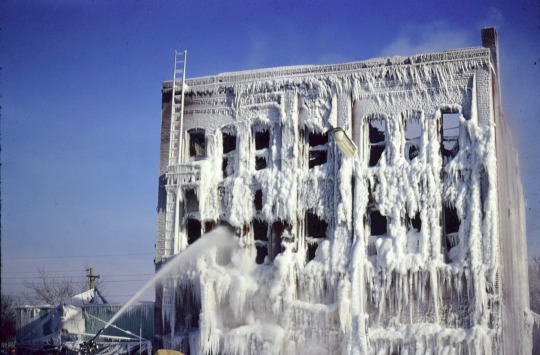
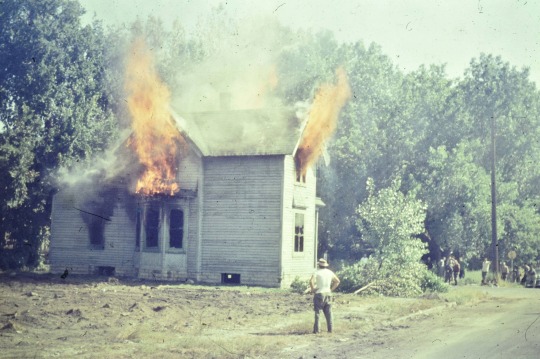
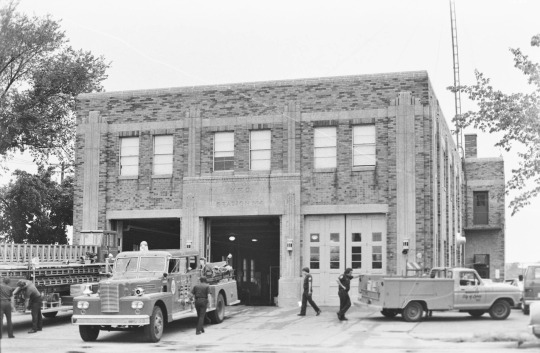



Don't Play with Fire
October is Fire Prevention Month. Browse over 2,000 photos of ferocious fires, fire aftermath, flame girls, fire trucks, firefighters, fire-related injuries, and fire safety demonstrations in the Hennepin County Library Digital Collections—a good visual reminder to not play with fire.
Photos top to bottom:
Fire at Pierce Skate and Ski, 1974 (C49286)
Egekvist Bakery Economy Store Fire, 1970 (C07834)
House at 1200 4th Ave. N on fire, undated (C49291)
Fire station No. 4, 1101 6th St. N (MHPC002304)
Washburn-Crosby Mill After Fire, 1991 (C60440)
Goodman Overcoat Building Fire, 1974 (MFD0149)
Fire Trucks in Minneapolis Fire Station No. 6, 30 13th St. S, 1974 (C49651)
See more fire and fire department posts from the past on our Tumblr.
#fires#Minneapolis Fire Department#fire departments#fire prevention month#Minneapolis#Minnesota#fire fighting#fire fighters#fire stations
43 notes
·
View notes
Text
I Gave George Floyd First Aid. Police Have Learned Nothing
— Jeremy Norton | July 30th, 2023 | Newsweek Magazine
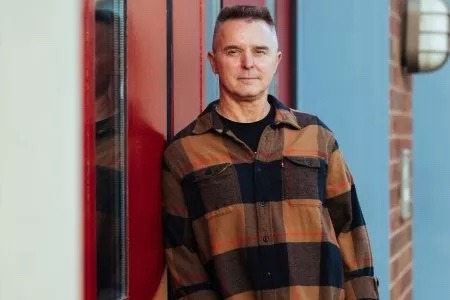
Jeremy Norton (Pictured) has been a Fire Captain for the Minneapolis Fire Department for over 22 years.
I watched my city burn. Saw the anguish caused, and suffered. Saw fractures and fissures in public fabric—Good Cops Castigated and Lumped with the Bad. Unfair, certainly, but so many citizens have suffered blanket judgments without redress.
The city leaders made promises—most of which have remained abstract, or abandoned. Floyd, his name, and image took on a life after his death, tragically. But: I stress, we still are missing the point.
I testified in the State and Federal Trials of the officers involved in killing Floyd. I have seen convictions, payouts, and reams of social media postings and think pieces, and declarations from civil leaders.
And yet, I must ask, Structurally, Systemically, and Institutionally: What changes have been made to prevent more Avoidable Deaths?
I argue we have yet to recognize or understand the fatal dynamics that caused the deaths of George Floyd, Keenan Anderson, Ivo Otieno, Elijah McLean, Yia Xiong, Travis Jordan, and David Smith.
The names spill off my page: I cannot tabulate the dead in the space allotted here.
We must distinguish between the truly rare aggressive and hostile person and the too-common civilian experiencing some form of altered mentation. Someone who is Incoherent, who is experiencing Emotional or mental Distress for any reason, this person's behaviors must be recognized and treated as something other than "Resisting" and "Refusing to Comply."
Someone in crisis and someone aggressively hostile are not the same. It is that simple.
Anderson had caused a Minor Traffic accident and appeared Incoherent and Agitated when the police officer engaged him. The officer escalated from speaking to shouting to physical restraint to fighting against a man who was clearly in distress.
More officers joined the fray. They shouted multiple commands, some contradictory; they piled on him on the ground, then deployed their Tasers—multiple times. The young man was not resisting or fighting them; he was having a crisis. His death was Unnecessary and Avoidable.
Otieno was experiencing a Mental Health crisis. His family called 911 for help. The responding officers escalated a Physical Struggle with the Agitated, Panicked young man. This began a multiple-hour process of Prone Restraint, Physical Abuse, Positional Asphyxia, and Medical Neglect. His death was unnecessary and avoidable.
In my 23 years as a Minneapolis Firefighter and EMT, I have been on multiple scenes with Agitated Civilians experiencing altered Mental Conditions, many people Incoherent and Unreachable through Words and Force.
George Floyd was not my first fatal call. We worked hard yet in futility to revive someone killed by overly aggressive officers. Every one of us at the scene carries the tragic horror with us.
I have seen far too many interactions go south explicitly due to the responders' Blind Demand for Immediate Submission and Acquiescence—generally the police, but at times EMS, too.

Relatives of George Floyd carry candles during a vigil at George Floyd Square on May 25, 2023 in Minneapolis, Minnesota. Stock image. Stephen Maturen/Getty Images
Here's the crucial point, what should be at the forefront of police and EMS training as well as state and city legal discussions: The majority of these calls go badly because emergency responders are not trained, equipped, or disposed to understand what they are actually encountering.
Police, Fire, and Paramedics must recognize that a person experiencing altered mentation is not the same as a person refusing to follow orders. Treating emotional and behavioral crises as deliberate aggression fails the public and the fundamental concept of emergency response.
How many civilians experiencing a mental health crisis—overwhelmingly men of color—must die at the hands, knees, and weapons of peace officers?
An investigation—of a minor vehicle collision, a bogus twenty-dollar bill, a man walking down the street—spirals out of control. Not because the subject means to harm the police officer, but because the Police Officer Demands Compliance, and if the person does not, or cannot, immediately comply, that is seen as a challenge and a threat.
If we do not Change Our Tactical Approach when encountering someone not in their right mind, We will Continue to Kill Innocent People.
The job can be dangerous: You never know what you will encounter. But that is the essence of emergency response. It is unpredictable and often chaotic.
Responders are given scant information via dispatch; we must make swift inferences immediately upon arrival. Daily, The Police, Paramedics, and Firefighters encounter civilians in conditions or crises of altered mentation. We should expect these folks. We must be prepared for a range of people who are not going to respond coherently.
What if the person does not speak English? Has a Brain Injury? Is Hypoxic or Hypoglycemic? In shock? Is under the Influence of Narcotics? What if it's my father with Alzheimer's? What if it's someone having a mental health emergency, a psychotic break?
I have responded to people with each of These Conditions and none of them were Lucid or Immediately Compliant. None of them were deliberately a threat, either.
There are numerous videos of police encountering civilians in emotional distress, mental crisis, and incoherence, with the officers escalating a physical battle. Yelling Orders at someone who is Incoherent is a Flawed, Futile Approach. Using Joint Locks, Pressure Point Attacks, Chokeholds, and Bodyweight—all the forms of overwhelming Physical Engagement—do not calm or control a person in crisis or altered mentation. The Pain Inflicted by the Officers will Not 'Bring Them to Their Senses' but will provoke panic and a fight-or-flight response.
When someone is pinned on the ground by several people, there can be Panicked Agitation, Hyperventilation, and Positional Asphyxia.
We are directly causing a growing cardiac and respiratory crisis, one that would not be occurring had we not physically restrained the person.
For Years, the City Leadership Repeated the Police Narrative: The Man Refused to Comply. Officers attempted to subdue him. He resisted. He suffered a medical event. There was nothing else we could have done.
What strikes me is that So Many Killings have Occurred Without any Significant Accountability, No Rules or Laws Changed, No Legal Interventions, No Oversight of Department Policies or Training.
Allowing the behaviors to persist, despite the number of dead and the settlements after the fact, is a Moral Failure by Local, State, and National Leaders.
These deaths have been accepted as the cost of policing. With increased public pressure, and abundant video evidence, more cities are prosecuting the officers involved.
This might be a step toward justice for the families of the dead, but it avoids addressing what is at the root: Poor Understanding, Poor Training, Poor Guidelines, and a Healthcare Crisis that leaves so many people struggling with Mental Health, Substance Abuse, Medication Shortages.
We, the emergency responders, are the ones who engage those in crises. The Cities Won't Do What is Necessary to Equip Their Responders with the real tools to better recognize, assess, and engage the vast range of civilians.
I am not naïve. I have been on tumultuous, violent calls. I have seen aggressive, agitated, and unstable people. There was no calming or cajoling them. The longer it took us to recognize the person was beyond reaching, the more the scene deteriorated. These are scary situations. On the streets, away from the emergency departments, we need a means to safely subdue a person in crisis.
Sedation works. But sedation should not be dispensed wantonly. We must recognize that if we sedate someone after several minutes of agitated struggle and physical engagement, they might already be heading into respiratory or cardiac collapse.
If emergency responders cannot distinguish between someone who is a deliberate threat versus someone who is in crisis, and if we act as if there is only the former—we will continue to murder innocent people.
“If City Governments Can Only Exonerate Their Officers, No Matter Their Misdeeds, or Else Vilify the Individual Officers As Rogues and Lone Wolves — Avoiding the Crucial Roles that Systemic and Cultural Behaviors Play—They will Continue to Fail Their Citizens and Their Employees.”
The final line of Langston Hughes' powerful poem "Harlem" (commonly referred to as "A Dream Deferred") is: "Or does it explode?"
Why must it take a riot to get our attention? What will it take to make actual changes?
— Jeremy Norton is a Fire Captain for the Minneapolis Fire Department and the Author of Trauma Sponges: Dispatches from the Scarred Heart of Emergency Response.
#The Newsweek Magazine#My Turn#George Floyd#First Aid#Police#Jeremy Norton#Fire Captain#Minneapolis Fire Department#Minnesota#State and Federal Trials#George Floyd Keenan Anderson Ivo Otieno Elijah McLean Yia Xiong Travis Jordan and David Smith#Police | Paramedics | Firefighters#Narcotics#Alzheimer#Hypoxic | Hypoglycemic#Brain Injury#Non-Speaking English#Mental Health#Emotional Distress | Mental Crisis#Incoherence#Joint Locks | Pressure Point Attacks | Chokeholds | Bodyweight#Panicked Agitation | Hyperventilation | Positional Asphyxia#Poor Understanding | Poor Training | Poor Guidelines
2 notes
·
View notes
Photo

Minneapolis Fire Department works on putting out fires on the corner of East Lake and Minnehaha/26th Avenue. The AutoZone on the corner was the first fire lit during the uprising.
#BLM#Black Lives Matter#Fire#Fire department#George Floyd#Minneapolis#Minneapolis Fire#Minneapolis Police#MinneapolisUprising#Minnesota#Police Brutality#Protest#Riot#South Minneapolis
2 notes
·
View notes
Text
How the NYPD defeated bodycams

Anything that can't go on forever will eventually stop. When American patience for racial profiling in traffic stops reached a breaking point, cops rolled out dashcams. Dashcam footage went AWOL, or just recorded lots of racist, pretextual stops. Racial profiling continued.
Tasers and pepper spray were supposed to curb the undue use of force by giving cops an alternative to shooting dangerous-seeming people. Instead, we got cops who tasered and sprayed unarmed people and then shot them to pieces.
Next came bodycams: by indelibly recording cops' interactions with the public, body-worn cameras were pitched as a way to bring accountability to American law-enforcement. Finally, police leadership would be able to sort officers' claims from eyewitness accounts and figure out who was lying. Bad cops could be disciplined. Repeat offenders could be fired.
Police boosters insist that police violence and corruption are the result of "a few bad apples." As the saying goes, "a few bad apples spoil the bushel." If you think there are just a few bad cops on the force, then you should want to get rid of them before they wreck the whole institution. Bodycams could empirically identify the bad apples, right?
Well, hypothetically. But what if police leadership don't want to get rid of the bad apples? What if the reason that dashcams, tasers, and pepper spray failed is that police leadership are fine with them? If that were the case, then bodycams would turn into just another expensive prop for an off-Broadway accountability theater.
What if?
In "How Police Have Undermined the Promise of Body Cameras," Propublica's Eric Umansky and Umar Farooq deliver a characteristically thorough, deep, and fascinating account of the failure of NYPD bodycams to create the accountability that New York's political and police leadership promised:
https://www.propublica.org/article/how-police-undermined-promise-body-cameras
Topline: NYPD's bodycam rollout was sabotaged by police leadership and top NYC politicians. Rather than turning over bodycam footage to oversight boards following violent incidents, the NYPD suppresses it. When overseers are allowed to see the footage, they get fragmentary access. When those fragments reveal misconduct, they are forbidden to speak of it. When the revealed misconduct is separate from the main incident, it can't be used to discipline officers. When footage is made available to the public, it is selectively edited to omit evidence of misconduct.
NYPD policy contains loopholes that allow them to withhold footage. Where those loopholes don't apply, the NYPD routinely suppresses footage anyway, violating its own policies. When the NYPD violates its policies, it faces no consequences. When overseers complain, they are fired.
Bodycams could be a source of accountability for cops, but for that to be true, control over bodycams would have to vest with institutions that want to improve policing. If control over bodycams is given to institutions that want to shield cops from accountability, that's exactly what will happen. There is nothing about bodycams that makes them more resistant to capture than dashcams, tasers or pepper spray.
This is a problem across multiple police departments. Minneapolis, for example, has policies from before and after the George Floyd uprisings that require bodycam disclosure, and those policies are routinely flouted. Derek Chauvin, George Floyd's murderer, was a repeat offender and had been caught on bodycam kneeling on other Black peoples' necks. Chauvin once clubbed a 14 year old child into unconsciousness and then knelt on his neck for 15 minutes as his mother begged for her child's life. Chauvin faced no discipline for this and the footage was suppressed.
In Montgomery, Alabama, it took five years of hard wrangling to get access to bodycam footage after an officer sicced his attack dog on an unarmed Black man without warning. The dog severed the man's femoral artery and he died. Montgomery PD suppressed the footage, citing the risk of officers facing "embarrassment."
In Memphis, the notoriously racist police department was able to suppress bodycam disclosures until the murder of Tyre Nichols. The behavior of the officers who beat Nichols to death are a testament to their belief in their own impunity. Some officers illegally switched off their cameras; others participated in the beating in full view of the cameras, fearing no consequences.
In South Carolina, the police murder of Walter Scott was captured on a bystander's phone camera. That footage made it clear that Scott's uniformed killers lied, prompting then-governor Nikki Haley to sign a law giving the public access to bodycam footage. But the law contained a glaring loophole: it made bodycam footage "not a public record subject to disclosure." Nothing changed.
Bodycam footage does often reveal that killer cops lie about their actions. When a Cincinnati cop killed a Black man during a 2015 traffic-stop, his bodycam footage revealed that the officer lied about his victim "lunging at him" before he shot. Last summer, a Philadelphia cop was caught lying about the circumstances that led to him murdering a member of the public. Again, the officer claimed the man had "lunged at him." The cop's camera showed the man sitting peacefully in his own car.
Police departments across the country struggle with violent, lying officers, but few can rival the NYPD for corruption, violence, scale and impunity. The NYPD has its own "goon squad," the Strategic Response Group, whose leaked manual reveals how the secret unit spends about $100m/year training and deploying ultraviolent, illegal tactics:
https://pluralistic.net/2021/04/07/cruelty-by-design/#blam-blam-blam
The NYPD's disciplinary records – published despite a panicked scramble to suppress them – reveal the NYPD's infestation with criminal cops who repeatedly break the law in meting out violence against the public:
https://pluralistic.net/2020/07/27/ip/#nypd-who
These cops are the proverbial bad apples, and they do indeed spoil the barrel. A 2019 empirical analysis of police disciplinary records show that corruption is contagious: when crooked cops are paired with partners who have clean disciplinary records, those partners become crooked, too, and the effect lasts even after the partnership ends:
https://journals.sagepub.com/doi/full/10.1177/2378023119879798
Despite the risk of harboring criminals in police ranks, the NYPD goes to extreme lengths to keep its worst officers on the street. New York City's police "union"'s deal with the city requires NYC to divert millions to a (once) secret slushfund used to pay high-priced lawyers to defend cops whose conduct is so egregious that the city's own attorneys refuse to defend them:
https://pluralistic.net/2021/03/26/overfitness-factor/#heads-you-lose-tails-they-win
This is a good place for your periodic reminder that police unions are not unions:
https://pluralistic.net/2020/07/28/afterland/#selective-solidarity
Indeed, despite rhetoric to the contrary, policing is a relatively safe occupation, with death rates well below the risks to roofers, loggers, or pizza delivery drivers:
https://pluralistic.net/2022/01/27/extraordinary-popular-delusions/#onshore-havana-syndrome
The biggest risk to police officers – the single factor that significantly increased death rates among cops – is police unions themselves. Police unions successfully pressured cities across American to reject covid risk mitigation, from masking to vaccinations, leading to a wave of police deaths. "Suicide by cop" is very rare, but US officers committed "mass suicide by cop union":
https://www.nytimes.com/2021/10/12/us/police-covid-vaccines.html
But the story that policing is much more dangerous than it really is a useful one. It has a business-model. Military contractors who turn local Barney Fifes into Judge Dredd cosplayers with assault rifles, tanks and other "excess" military gear make billions from the tale:
https://pluralistic.net/2020/07/10/flintstone-delano-roosevelt/#1033-1022
It's not just beltway bandits who love this story. For cops to be shielded from consequences for murdering the public, they need to tell themselves and the rest of us that they are a "thin blue line," and not mere armed bureaucrats. The myth that cops are in constant danger from the public justifies hair-trigger killings.
Consider the use of "civilian" to describe the public. Police are civilians. The only kind of police officer who isn't a civilian is a military policeman. Places where "civilians" interact with non-civilian law enforcement are, by definition, under military occupation. Calling the public "civilians" is a cheap rhetorical trick that converts a police officer to a patrolling soldier in hostile territory. Calling us "civilians" justifies killing us, because if we're civilians, then they are soldiers and we are at war.
The NYPD clearly conceives of itself as an occupying force and considers its "civilian" oversight to be the enemy. When New York's Civilian Complaint Review Board gained independence in 1993, thousands of off-duty cops joined Rudy Giuliani in a mass protest at City Hall and an occupation of the Brooklyn Bridge. This mass freakout is a measure of police intolerance for oversight – after all, the CCRB isn't even allowed to discipline officers, only make (routinely ignored) recommendations.
Kerry Sweet was the NYPD lawyer who oversaw the department's bodycam rollout. He once joked that the NYPD missed a chance to "bomb the room" where the NYPD's CCRB was meeting (when Propublica asked him to confirm this, he said he couldn't remember those remarks, but "on reflection, it should have been an airstrike").
Obvious defects in the NYPD's bodycam policy go beyond the ability to suppress disclosure of the footage. The department has no official tracking system for its bodycam files. They aren't geotagged, only marked by officer badge-number and name. So if a member of the public comes forward to complain that an unknown officer committed a crime at a specific place and time, there's no way to retrieve that footage. Even where footage can be found, the NYPD often hides the ball: in 20% of cases where the Department told the CCRB footage didn't exist, they were lying.
Figuring out how to make bodycam footage work better is complex, but there are some obvious first steps. Other cities have no problem geotagging their footage. In Chicago, the CCRB can directly access the servers where bodycam footage is stored (when the NYPD CCRB members proposed this, they were fired).
Meanwhile, the NYPD keeps protecting its killers. The Propublica story opens with the police killing of Miguel Richards. Richards' parents hadn't heard from him in a while, so they asked his Bronx landlord to check on him (the Richards live in Jamaica). The landlord called the cops. The cops killed Richards.
The cops claimed he had a gun and they were acting in self-defense. They released a highly edited reel of bodycam footage to support that claim. When the full video was eventually extracted, it revealed that Richards had a tiny plastic toy guy and a small folding knife. The officers involved believed he was suffering an acute mental health incident and stated that policy demanded that they close his bedroom door and wait for specialists. Instead, they barked orders at him and then fired 16 rounds at him. Seven hit him. One ruptured his aorta. As he lay dying on his bedroom floor, one officer roughly tossed him around and cuffed him. He died.
New York's Police Benevolent Association – the largest police "union" in NYC – awarded the officers involved its "Finest of the Finest" prize for their conduct in the killing.
This isn't an isolated incident. A month after the NYPD decided not to punish the cops who killed Richards, NYPD officers murdered Kawaski Trawick in his Bronx apartment:
https://pluralistic.net/2020/12/04/kawaski-trawick/#Kawaski-Trawick
The officers lied about it, suppressed release of the bodycam footage that would reveal their lies, and then escaped any justice when the footage and the lies were revealed.
None of this means that bodycams are useless. It just means that bodycams will only help bring accountability to police forces when they are directed by parties who have the will and power to make the police accountable.
When police leaders and city governments support police corruption, adding bodycams won't change that fact.

If you'd like an essay-formatted version of this post to read or share, here's a link to it on pluralistic.net, my surveillance-free, ad-free, tracker-free blog:
https://pluralistic.net/2023/12/13/i-want-a-roof-over-my-head/#and-bread-on-the-table

Image:
Cryteria (modified)
https://commons.wikimedia.org/wiki/File:HAL9000.svg
CC BY 3.0
https://creativecommons.org/licenses/by/3.0/deed.en
--
Tony Webster, modified
https://commons.wikimedia.org/wiki/File:Minneapolis_Police_Officer_Body_Camera_%2848968390892%29.jpg
CC BY-SA 2.0
https://creativecommons.org/licenses/by-sa/2.0/deed.en
#pluralistic#impunity#ccrb#nypd#abolish the police#acab#police#corruption#bodycams#body-worn cameras#propublica
3K notes
·
View notes
Text
Two months prior to its release, would-be doyens of Swift’s Tortured Poets Department have taken its barbed track listing very literally, leading to intense, often nefarious speculation regarding Swift’s six-year relationship with the British actor Joe Alwyn, which seemingly ended in early 2023.
The album’s title, revealed onstage at the Grammy awards, was quickly linked to a December, 2022 interview with Alwyn and Paul Mescal in which they revealed that Andrew Scott started their group chat, the Tortured Man Club. (“It hasn’t had much use recently,” Alwyn said: you wonder if it’s undergone a recent revival.) Swift revealed the leading track list a day later: My Boy Only Breaks His Favorite Toys, So Long, London, I Can Do It With a Broken Heart, The Smallest Man Who Ever Lived, to name a few, sending fans wild with speculation.
Swift, obviously, has every right to sing about her relationships however she wants to (no apologies to Eamonn Holmes). But in the absence of any music, some fans have spread baseless, dangerous and even libellous allegations about Alwyn’s conduct (which, for obvious reasons, I can’t repeat).
Last month, a brief fan-shot video of them dining in a New Orleans restaurant in December, 2022 was recirculated online with AI-doctored audio that made it sound as though Alwyn is saying “you don’t get to tell me about sad,” a line printed on the back of one of the new album’s four physical editions.
When Swift recently told a crowd that she was “lonely” when writing her 2020 album Folklore – some of which was co-written with Alwyn during the pandemic, a lonely time for most – fans took that as further confirmation of their theories. A live medley of three songs that all appear to reference cheating threw petrol on the fire.
Swift could make this stop. She is no stranger to airing her displeasure with the likes of Ticketmaster, Scooter Braun, Spotify and Apple Music, and, occasionally, politicians. Before she released Speak Now (Taylor’s Version) last year, she gave a veiled speech at one Eras tour date effectively asking fans not to go after John Mayer, whom she dated when she was 19 and he was 32 and is understood to be the subject of that album’s Dear John.
“I am not putting this album out so you should feel the need to defend me on the internet against someone you think I wrote a song about 14m years ago when I was 19,” she said in Minneapolis.
But for whatever reason – and obviously, no member of the public has any idea what transpired between her and Alwyn so far – this time she has opted to stay quiet.
Establishing a baseline for conduct is neither commercially risky nor unprecedented: just last week, Ariana Grande said, after the release of her post-divorce album Eternal Sunshine: “Anyone that is sending hateful messages to the people in my life based on your interpretation of this album is not supporting me and is absolutely doing the polar opposite of what I would ever encourage”.
It feels like the endgame of a cat-and-mouse act that’s gone too far. Swift’s gestures towards meaning have led every single thing she does to be considered a kind of marketing, a clue to be solved. It leaves a superstar who’s usually hot on her messaging open to misinterpretation: hints about her personal life are turned by some fans into witch-hunts for anyone perceived to have wronged her; her current silence on politics allows politicians to invoke her name, from the New South Wales police commissioner quoting Swift’s anti-haters lines while defending police to Joe Biden joking that the matter of her apparently much sought-after endorsement is “classified” on Late Night With Seth Meyers.
When Swift made a blandly neutral handwritten post encouraging US citizens to register to vote on Super Tuesday, some fans speculated that her unusual left-leaning handwriting was the real indication of her loyalties – suggesting they’re so starved of substance that they’re reading into empty messages because of this dynamic she has established. (The more likely explanation is the insane way she holds a pen.)
For Swift to only direct fans as to her wishes when it suits her, it weakens her status as a truth-teller. If the comparisons with Dickinson mean anything, she might remember that nothing in the world has as much power as a word feels like the endgame of a cat-and-mouse act that’s gone too far.
#taylor swift#anti taylor swift#joe alwyn#travis kelce#the tortured poets department#the critics are not going to be kind to this album#she's too rich & successful to be so bitchy & vindictive#laura snapes
77 notes
·
View notes
Text
Another great peaking material:
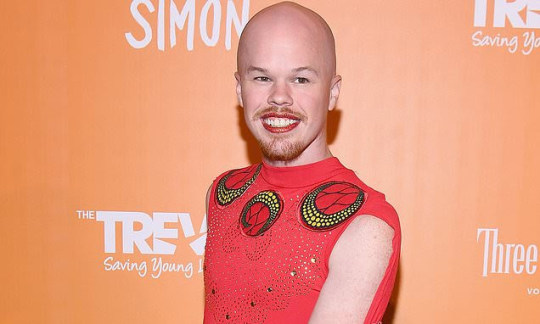
Biden's non-binary nuclear official Sam Brinton is arrested as a 'fugitive of justice' - six months after being fired for stealing women's clothes at multiple airports
The former Biden administration nuclear energy official Sam Brinton has been arrested as a 'fugitive of justice', six months after being fired for stealing women's clothes in airports.
Brinton was picked up at home in Maryland. The non-binary, drag-queen was fired after admitting to taking a stranger's suitcase from the luggage carousel during a work trip.
The Biden administration had proudly announced Brinton's hiring, one of the first non-binary, LGBTQ hires in government.
---
For the luggage thing:
(...)
Brinton, who attracted attention as one of the federal government's first non-binary officials, was first charged last month for nabbing a woman’s suitcase from the baggage carousel at the Minneapolis-St. Paul International Airport in September. They initially denied taking the bag—which was reportedly worth more than $2,500—but later said they had grabbed it by mistake.
(...)
Then last week a second set of charges were filed in Las Vegas for Brinton—with police sharing surveillance footage of them leaving the Harry Reid International Airport with another woman's bag—this one worth an estimated $3,670, according to court documents.
(...)
The court documents said an officer with the Las Vegas Metropolitan department viewed video footage showing Briton looking around suspiciously—placing the bag back on the luggage turnstile before snagging it a second time as it came around.
---
Not his first offense of that kind since
Female fashion designer alleges Sam Brinton wore her clothing that disappeared from airport in 2018
Tanzanian fashion designer Asya Khamsin tells Fox News Digital: 'He wore my clothes which was stolen'



235 notes
·
View notes
Text
By Jesse O’Neill
Published Sep. 20, 2023,
A Tanzanian fashion designer has finally been reunited with clothes that were allegedly swiped from her in 2018 by Sam Brinton, the ex-Department of Energy official with a penchant for stealing women’s suitcases from airports.
The Metropolitan Washington Airports Authority Police Department on Wednesday confirmed the development, which was first reported by Fox News.
“The MWAA Police Department can confirm we returned the victim’s property and police retained photos of the evidence for prosecution. The case is still under adjudication and we cannot release more detailed information,” a spokesperson said.
One-time nuclear official Brinton was charged with grand larceny in February for allegedly taking designer Asya Khamsin’s luggage from Arlington, Va.’s Ronald Reagan National Airport, after pictures emerged showing them wearing a brightly colored, one-of-a-kind frock that had been in the case.
Khamsin, who spoke to The Post about the luggage heist earlier this year, did not immediately return a request for comment, but her lawyer issued a scathing statement that noted the returned clothes were not “immediately either wearable or saleable, as the result of his use of them.”
Attorneys Peter Hansen and Ben Akech noted that his client last week filed a lawsuit against Brinton, who is non-binary and uses “they/them” pronouns, to be reimbursed for “the stolen items, the larger business harm done to her by the theft, and the public subordination of her business brand to Mr. Brinton’s personal brand,” he continued.
“Mr. Brinton’s theft wrongfully put Asyakhamsin [sic] in a bind. She could watch her stolen designs be used and celebrated without attribution to her, or she could call out the wrongful taking, but then watch both her and her work be publicly linked to Mr. Brinton without her consent,” the lawyers continued, repeatedly referring to Brinton as a man.
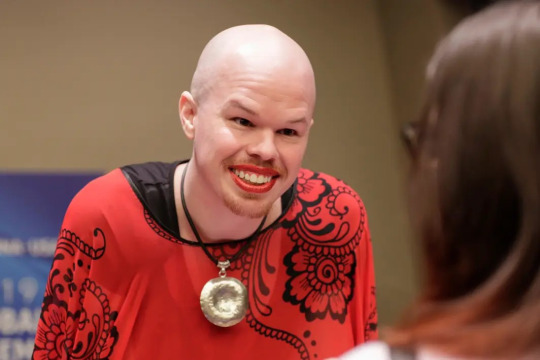
Sam Brinton seen wearing a dress allegedly stolen from Asya Khamsin at the UNA-USAs 2019 Global Engagement Summit at UN headquarters.Europa Newswire/Shutterstock
Brinton was fired last year after being caught red-handed in a string of other luggage thefts.
They were also jailed in Virginia for about two weeks in relation to the Khamsin theft before being bonded out ahead of a December preliminary hearing.
The former deputy assistant secretary for spent fuel and waste at the Office of Nuclear Energy allegedly snatched another woman’s suitcase while on a taxpayer-funded trip to Las Vegas last July, according to documents reviewed by The Post.

Asya Khamsin had shamed the suspect by posting a picture of herself in the one-of-a-kind dress.Asya Khamsin
Brinton eventually pleaded no contest in that incident and was sentenced to a 180-day suspended jail sentence and made to undergo a mental health evaluation and pay $3,670.74 in restitution.
Two months later, the ex-Biden administration official allegedly stole a $2,325 designer suitcase from the Minneapolis-St. Paul Airport baggage claim and was then seen using it on two different occasions.

To resolve that case, Brinton agreed to participate in an adult diversion program for first-time, nonviolent offenders and undergo a mental health evaluation, write a letter of apology to the victim, return any stolen property and perform three days of community service.
In February, Khamsin revealed how she had to cancel a fashion show after her bag of 30 original custom-made pieces was swiped from the airport, only to see the dresses be worn by Brinton at public events.
“I was thinking, ‘Who took my bag, where is it?’ for a long time. Then I see images of the outfits [being worn by Brinton] and I was so confused and upset,” said Khamsin, who splits her time between Houston and Tanzania.
“I don’t know if I would like the clothes back,” she said at the time.
“The investigation is in good hands with the FBI. I’m waiting on them, they will do the right thing.”
#Sam Brinton steals#Asya Khamsin creates#He would have had the money to pay for women's clothes#He stole and wore what he stole in public for that sense of power over who he stole form#He didn't just steal her clothes#Asya Khamson had to cancel a show because too many pieces were missing#The Biden administration already knew he was a freak
70 notes
·
View notes
Text
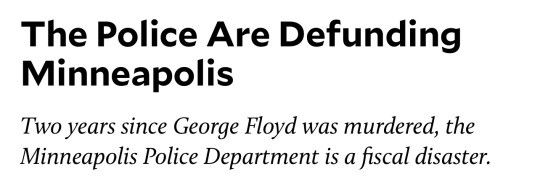

Simply put, Minneapolis did not defund the police. It’s the opposite. The police are defunding Minneapolis.
How? Well, first there are the costly settlements from the violence the police committed: $27 million for George Floyd’s family; $2.4 million for protester Soren Stevenson; $650,000 for journalist Linda Tirado. Tirado and Stevenson both have an eyeball missing as a result of the police firing so called “less lethal” rubber-coated steel bullets at them during protests. There is $1.5 million for Jaleel Stallings, a Black army veteran who was hit by a less-lethal round from MPD officers riding around in an unmarked van five days after Floyd’s murder. Under the impression it was a real bullet, Stallings fired a real gun in self defense. He was beaten by the cops and charged with attempted murder only to be acquitted on all charges. His friend Virgil Lee Jackson Jr., who was with him and beaten and tased for two minutes, also received a $645,000 settlement. The total is staggering. An actuarial study by the city in 2021 estimated that legal claims made in the fifteen days after Floyd’s murder would lead to Minneapolis paying out $111 million in lawsuit settlements.
Then, there is the cost of the police officers themselves. Nearly 300 officers have left the department since Floyd’s murder, over one third of the force. Over 200 have left with workers’ compensation settlement checks and lucrative disability pensions, based on claims that policing the protests gave them post-traumatic stress disorder. Are these civil servants reaping the benefits of hard-won public-sector labor protections after bravely fulfilling their duty? Or is this a permanent version of what labor organizers would call a “sick out”?
Either way, some of these cops are getting generous retirement packages (costing the city money) after a career of complaints (costing the city money). One officer racked up more than $344,000 in misconduct settlements over the course of 12 years. He’s now receiving $56,000 a year in disability pension, on top of $195,000 in a workers comp settlement, according to records reviewed by Winter. Another officer—one of five involved in the 2013 SWAT Team killing of a Black man named Terrance Franklin (after new reporting by Time the case has undergone renewed scrutiny)—is making more than $128,000 a year on disability pension, on top of $195,000 in his workers’ comp settlement. Those officers who fired at Stallings from an unmarked van, and fractured his eye socket? Three of them are getting a combined $22,000 a month in disability pension for the trauma inflicted upon them.
Since Floyd’s murder, Minneapolis has paid more than $23 million in workers’ compensation settlements to police officers, according to the Star Tribune. Ronald Meuser, an attorney representing 200 MPD officers (a large portion of which he says were inside the 3rd Precinct station, and were forced to flee the building before the station eventually was set on fire by protesters), estimates that the city will eventually pay out $35 million dollars.
This is a great deal of money. The combination of these payouts and police misconduct settlements is approaching $150 million dollars. That’s more than three fourths of what the MPD’s budget was in 2020. The city’s self-insurance fund, which it uses to pay out settlements, is expected to be at negative 94 million dollars by the end of 2022.
👉🏿 https://www.motherjones.com/politics/2022/08/minneapolis-police-defund-george-floyd-city-budget/
181 notes
·
View notes
Text
HOW ARE THEY REINSTATING MURDERING COPS IN ATLANTA?
U.S.|Atlanta to Pay $1 Million to Rayshard Brooks’s Family
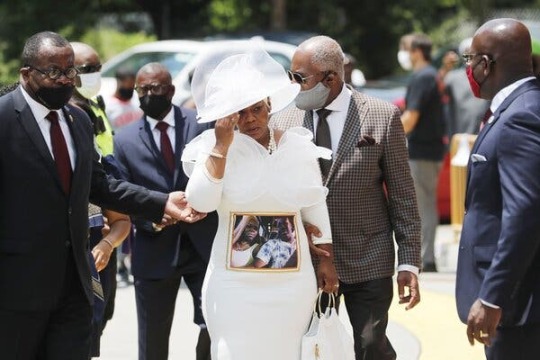
Nov. 21, 2022, 9:50 p.m. ET
The city of Atlanta agreed on Monday to pay $1 million to settle a lawsuit brought by the widow and the estate of Rayshard Brooks, a Black man who was fatally shot by a white police officer in 2020, and whose death touched off nationwide protests.
The City Council’s unanimous vote came nearly three months after prosecutors determined that the two officers involved in the episode committed no crimes on June 12, 2020, when Mr. Brooks, 27, was shot by one of the officers in a Wendy’s parking lot. The Council also found that the use of deadly force had been reasonable.
Lawyers for Mr. Brooks’s family, from the firm Stewart Miller Simmons Trial Attorneys, said in a statement that “although the children of Mr. Brooks have lost their father, settling the case will undoubtedly assist them with future plans as they come of age.”
They added that the family was “disappointed that prosecutors didn’t pursue a criminal case against the officers involved in Mr. Brooks’s death.”
Councilman Dustin Hillis said at a Council meeting on Monday that the settlement would be paid to Mr. Brooks’s widow, Tomika Miller; the Brooks estate; and the lawyers’ firm.
He added that the city attorney had determined that “the city of Atlanta’s potential financial exposure in defending plaintiff’s claims is in excess of the settlement amount.”
The family’s wrongful-death lawsuit had claimed that the killing of Mr. Brooks was “senseless and unjustified,” and that the city had violated his civil rights.
Mr. Brooks was killed about three weeks after a police officer in Minneapolis murdered George Floyd. The Atlanta killing spurred fresh rounds of street demonstrations in 2020 and became part of the broader national debate about the treatment of Black Americans at the hands of police officers.
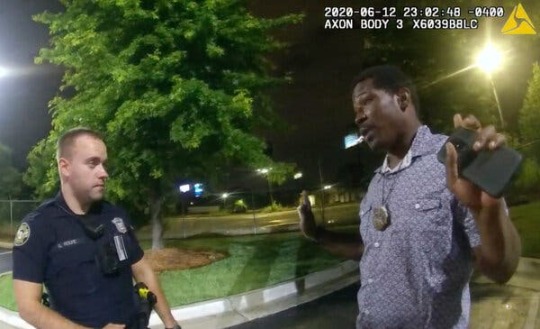
The authorities said that Mr. Brooks had fallen asleep in his car in the drive-through lane at Wendy’s on June 12, 2020. At first, the encounter between the officers and Mr. Brooks was calm. But after 40 minutes, the episode turned violent when the officers moved to arrest him. Mr. Brooks hit one of the officers, grabbed the other’s Taser, fired it and took off running.
A widely shared video captured the moment when one of the officers, Garrett Rolfe, who had worked with the department since 2013, fired his handgun three times while he was chasing Mr. Brooks, who fired the Taser he had seized as he ran.
Mr. Brooks was shot twice, in the back and buttocks, prosecutors said. He was taken to a hospital, where he died after surgery, the authorities said.
In the wake of the shooting, the Wendy’s restaurant where the shooting occurred was burned down after angry demonstrations, and the Atlanta police chief at the time, Erika Shields, resigned.
Officer Rolfe was initially charged with murder and 10 other criminal counts in connection with the fatal shooting of Mr. Brooks, and the other officer, Devin Brosnan, faced a number of lesser charges. But prosecutors announced in August that they would drop all charges.
Officer Rolfe was fired from the Police Department the day after the shooting, but reinstated in May 2021 by the city’s Civil Service Review Board.
#Atlanta to Pay $1 Million to Rayshard Brooks’s Family#Rayshard Brooks#apd#murdered by atlanta cops at wendys#HOW ARE THEY REINSTATING MURDERING COPS IN ATLANTA?#Black Lives Matter#BLM
59 notes
·
View notes
Text
When a call to the police for help turns deadly
In at least 178 cases over three years, law enforcement killed the individuals they were called to assist
By Jon Gerberg and
Alice Li
June 22, 2022
SAN ANTONIO — Brendan Daniels tried to find help for his brother.
Damian Daniels was alone in his San Antonio home in the throes of a mental health crisis. The 30-year-old Black combat veteran had grown increasingly depressed after the recent deaths of his sister, father and uncle in quick succession. The stress and isolation of the pandemic had been wearing on him, too. But when he began sending paranoid, delusional text messages to his brother 800 miles away in Colorado, Brendan felt that it was time for someone to intervene.
UNACCOUNTABLE
An examination of policing in America amid the push for reform.
Explore more stories in this series.
Listen to Broken Doors:
The Post’s latest podcast investigates no-knock search warrants.
Brendan was wary of calling the police. It was August 2020, three months since the killing of George Floyd in Minneapolis ignited nationwide outrage over the issue of police violence against Black people. He decided to call the Red Cross, a safer option he thought, but the Red Cross then called 911 to initiate a welfare check.
Bexar County sheriff’s deputies visited Damian Daniels three times over the next 48 hours. The first two visits ended without incident. However, the third encounter escalated after deputies lunged at Daniels, who was standing in his doorway wearing a holstered, legally owned firearm.
The tussle ended when one of the officers, John Rodriguez, fired two shots into Daniels’s chest, killing him. Nearly two years later, his family is still searching for answers.
“This should have never happened,” Annette Watkins, Daniels’s mother, told The Washington Post. “We shouldn’t be living in a society where you call for help and be killed.”
A new investigation by The Post reveals at least 178 cases from 2019 to 2021 in which calls for help resulted in law enforcement officers shooting and killing the very people they were called on to assist. We used The Post’s nationwide database of fatal police shootings along with public reporting to identify cases in which the callers were concerned primarily for the individuals’ well-being and no imminent harm to others was reported.
Many of the calls alerted authorities to people in mental health crises, requested wellness checks or reported suicide threats. The calls came from the distressed individuals themselves or were made by worried family members, friends or neighbors. Police responses to calls for help are often routine, but, in the cases The Post identified, they turned deadly. Experts say that more needs to be done to protect those in crisis.
“If your family member is in pain, you should be able to pick up that phone and dial 911 and get help that is effective and safe,” said Christy Lopez, a policing expert at Georgetown Law School.
“We need to reject this idea that you can have a safe response or a law enforcement response,” she said. “We need to create a world in which you have a safe law enforcement response.”
Unaccountable: More on policing in America
The Washington Post’s investigation into policing in America has been ongoing since 2015, when The Post began logging every fatal shooting by an on-duty police officer in the United States.
The hidden cost of police misconduct: The Post collected data on nearly 40,000 payments at 25 of the nation’s largest police and sheriff’s departments within the past decade to uncover thousands of police officers whose alleged repeated misconduct cost taxpayers $1.5 billion.
Video: No-knock raids, considered one of the most dangerous and intrusive policing tactics, have been at the center of a debate in recent years over police use of force. At least 22 people have been killed by police nationwide carrying out no-knock warrants since 2015, according to a Post investigation.
Podcast: Hosted by Jenn Abelson and Nicole Dungca, “Broken Doors” is a six-part investigative podcast about how no-knock warrants are deployed in the American justice system — and what happens when accountability is flawed at every level.
Curbing crime: A crime-reduction strategy abandoned by Louisville police after thefatal shooting of Breonna Taylor has since spread to other major U.S. cities, gaining favor with police chiefs for its potential to reduce violent crime despite its ties to the case that sparked widespread calls for police reform.
Community oversight: Police nationwide have frequently defied efforts to impose civilian oversight and, in turn, undermined the ability of communities to hold law enforcement accountable, according to a Post investigation
10 notes
·
View notes
Text
For its report, the Daily Dot matched information from the 50-a and NYPD databases, as well as published media reports, to officers’ names listed by the state.
It says it uncovered “an exodus” of officers to Florida law enforcement agencies from the NYPD in the wake of a backlash against the department for its brutal handling of racial justice protests in 2020 after the murder of George Floyd by a Minneapolis police officer.
Among them were at least two dozen officers whose names matched those on the NYPD’s civilian complaint review board database, including some who, according to those complaints, “unlawfully pepper sprayed, assaulted, and pointed their firearms at suspects, as well as used chokeholds and offensive language regarding race and ethnicity”.
A civil rights lawsuit filed in 2018 against former NYPD sergeant Haitham Hussameldin alleged the officer used physical violence against a teenager on her way to school. Hussameldin, now employed by Florida’s Manapalan police department, accrued six formal complaints, including “multiple allegations of abuse of authority and overuse of physical force” in New York, the Daily Dot said. All the complaints were withdrawn or unsubstantiated.
Another former New York officer now employed in Florida was involved in two deaths, one of which led to a $100,000 civil settlement, the Daily Dot reported. And in October 2022, the Apopka police department hired as an officer Justin Burgos, 19, the son of a retired NYPD deputy inspector, who a year earlier was charged with reckless endangerment, reckless driving and obstruction of governmental administration for driving his car into protesters in Manhattan calling for the firing of an officer accused of beating a Black suspect.
14 notes
·
View notes
Text

Payne Calhoun’s Wrongful Discharge
When Payne Calhoun was hired in 1944, he was the Minneapolis Fire Department’s only Black firefighter. But he was fired on October 1, 1944, soon after he was hired, for wearing a blue rather than gray shirt to a fire call. Calhoun argued that uniform gray shirts were impossible to find because of requisitions by the Navy during WWII. And indeed, upon visits to nine other fire stations, Fire Chief Earl Traeger found gray-shirt violations in all of them. When the City Council threatened to suspend Traeger for wrongful dismissal, he eventually rescinded Calhoun’s termination, but Calhoun declined to return. Rumors were that he wouldn’t be supported by his racist colleagues who would rather leave him to die should the situation arise. By Calhoun’s side through all this was Fannie M. Shanks, his legal counselor (more on Fannie!).
Though Black firefighters in Minneapolis existed as early as the 19th century, racism and discrimination caused their numbers to dwindle through the mid-20th century. After the resignation of Payne Calhoun in 1944, it would be 28 years before another Black firefighter would be hired by the Minneapolis Fire Department. In 1971, after years of Civil Rights work, a lawsuit against the Fire Department was filed by the Minneapolis Legal Aid Society to desegregate the department. It finally happened in 1972 when 10 people of color were hired. Today the Minneapolis Fire Department is run by Bryan Tyner, the city’s second Black fire chief and just over 30 percent of the firefighters are people of color. (Star Tribune, “50 Years of Integration”, Randy Furst, March 21, 2021)
Photo of Payne Calhoun from the Minneapolis Newspaper Photograph Collection in the Hennepin County Library Digital Collections.
#Minneapolis#Minnesota#Payne Calhoun#firefighters#Black firefighters#Black History#Minneapolis Fire Department#1940s
41 notes
·
View notes
Text
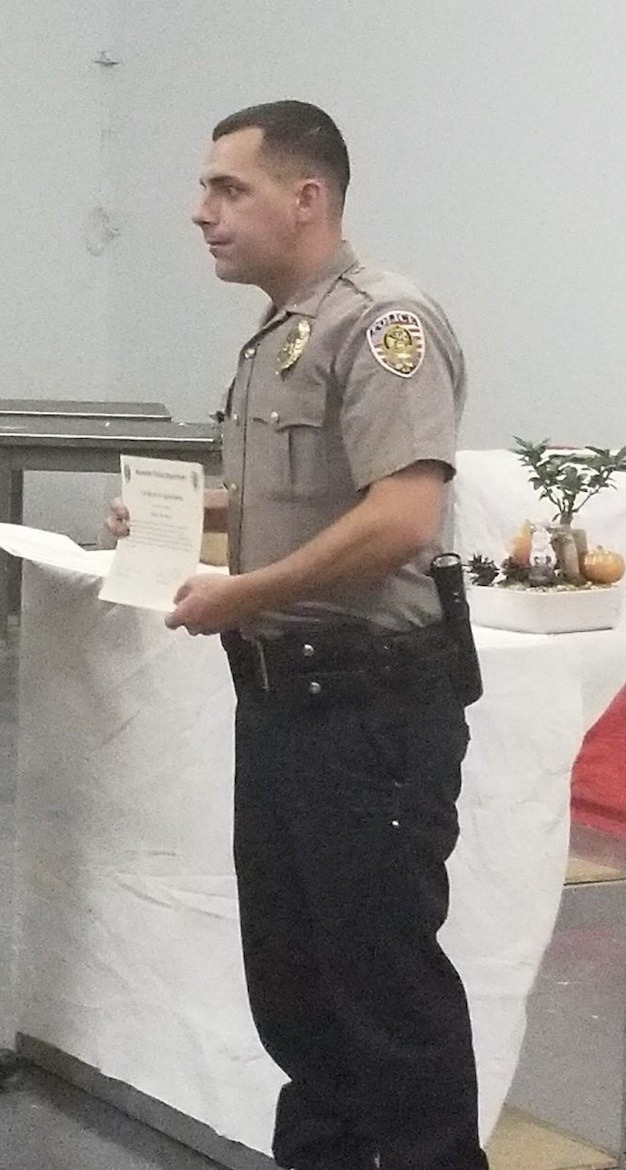
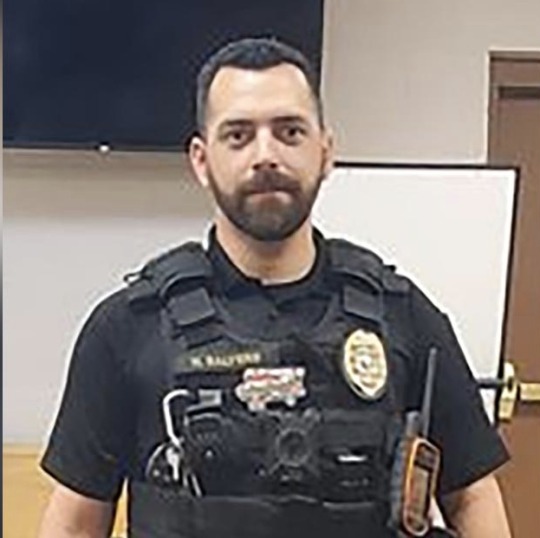

Post 993
Calvin Nicholas "Nick" Salyers, Saline County (Arkansas) Inmate, SID 4106894, born 1987, incarceration intake in November 2021 at age 34, sentenced to 365 days, now released
Misdemeanor Negligent Homicide
In July 2020, an Alexander, Arkansas police officer was arrested for manslaughter in connection with the June 3 shooting death of fellow Alexander Police Officer Scott Hutton.
Alexander Police Department (APD) Officer Calvin Nicholas “Nick” Salyers turned himself in to Arkansas State Police (ASP) Criminal Investigation Division special agents on July 8, the ASP said in a press release.
Following the May 25 in-custody death of George Floyd in Minneapolis, Officer Salyers, a three-year APD veteran, allegedly told fellow APD Sergeant Matt Wharton that he would shoot protesters through the door if they showed up at his home.
According to the arrest affidavit, Sgt. Wharton warned Officer Salyers that doing so would be unjustifiably “reckless and negligent.”
On the night of June 3, 36-year-old Officer Hutton traveled to Officer Salyers’ home to pick up a patrol vehicle, according to the arrest affidavit.
Prior to his arrival, he attempted to reach Officer Salyers by cell phone and sent him a text asking him if he was awake, investigators said.
He received no response.
Officer Hutton pulled into the driveway of Officer Salyers’ Evergreen Drive home at approximately 7:12 p.m., then made his way onto the porch and knocked on his front door.
Officer Salyers was inside watching a movie with his girlfriend, Ashlee Cummings, when Officer Hutton arrived, according to court documents.
After hearing the knock, Officer Salyers grabbed his Glock .40 and went to the door to see who was there.
“According to his statement, he looked through the peep hole and saw a figure standing on his porch with a dark shirt and a gun on his hip,” the arrest affidavit read. “Salyers stated that he transferred his weapon from his right hand to his left hand and reached for the door knob and as he opened the door, the gun went off, firing a round through the front door.”
Officer Salyers said he didn’t realize that the person he’d shot was Officer Hutton until he got outside and saw him fall off of the porch, according to investigators.
He and Cummings immediately called Saline County 911 and told them they needed an ambulance for an officer who was “down,” according to the affidavit.
“All I seen was a gun,” Officer Salyers said in the 911 recording. “It was an accidental discharge.”
When Saline County Sheriff’s Office (SCSO) deputies arrived at the scene, they found Officer Hutton lying outside the residence, suffering from a gunshot wound.
A fellow APD officer was attempting lifesaving measures at the time
Officer Hutton was rushed to a hospital in Little Rock, where he was pronounced dead.
According to investigators, evidence at the scene showed that Officer Salyer’s pistol was in close contact with the door when it was fired.
“The bullet hole appeared to have contact residue, which indicated that the weapon was pressed against the door when fired,” according to the arrest affidavit. “Powder burns and a C-Shape ring of residue were left around the hole. There was a clear indentation where the pistol light, which was attached to the bottom of the barrel, marked the door as it was being fired.”
Investigators said the evidence showed Officer Salyers fired the gun with his left hand, sending a bullet through the wooden door and a glass storm door and into Officer Hutton’s upper-right chest area.
The round “traveled across his body, entered and exited the heart, then…wedged under the skin on his left side,” according to the arrest affidavit.
Officer Hutton was wearing a commonplace tactical gun belt and had his badge positioned next to his holstered firearm when he was shot.
The case went to a jury trial and in November 2021, Salyers was convicted. He was sentenced to 365 days in the County Jail.
Court records indicated that 3 months after his sentencing Salyers' seized firearm was returned to him. The judge commented that he was reluctant to release a firearm that had killed a police officer, but there was not legal basis to prevent the Court from releasing the weapon.
3l
14 notes
·
View notes
Photo
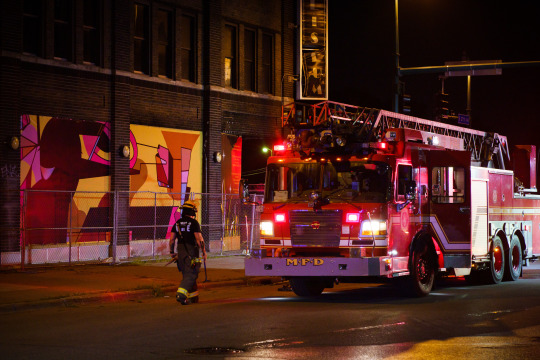
Firefighters fight a fire in the vacant Coliseum building. The building has sat empty after being burned in May 2020. Re-development is set to begin soon.
0 notes
Text
Damning as it was, most of what the U.S. Department of Justice announced about the Minneapolis Police Department on Friday had been documented a year ago by the state of Minnesota’s Department of Human Rights. Each report involved interviews with more than 2,000 people, and describes a police agency rife with excessive force, racial profiling, lack of accountability, military-style training—all the institutional shortcomings that allowed Derek Chauvin to think he could kneel on George Floyd’s neck for nine minutes.
Chauvin after all had done something similar several times before without a word of reproach from a superior, much less another officer, noted Attorney General Merrick Garland from the podium in Minneapolis. He was in town to confirm that the Feds’ probe of what may now be one of the world’s most infamous police departments—an investigation that Garland had announced one day after Chauvin was convicted of Floyd’s murder—had indeed found a “pattern and practice” of policing that violated the Constitution.
[time-brightcove not-tgx=”true”]
“The patterns and practices we observed made what happened to George Floyd possible,” Garland said.
Read more: George Floyd’s Family Reacted to the Verdict With an Uncontrollable Cry. That Sound Echoes Through Black America
The 89-page report contains more than the metrics—that, for example, a Black motorist in Minneapolis is nearly six times more likely to be pulled over for no reason than a white motorist—that justify federal intervention in the form of a court-enforceable plan, to which the department agreed in principle, to reform an agency that had rotted from the inside.
The report also offers specific glimpses of what that rot looks like.
“For example,” reads page 44, “during a May 2020 protest following the murder of George Floyd, a lieutenant was caught on camera expressing racist assumptions about Black people: ‘I’d love to scatter ’em but it’s time to f—in’ put people in jail and just prove the mayor wrong about his white supremacists from out of state. Although, this group probably is predominantly white, cuz there’s not looting and fires.’ Another officer agreed.” The report notes that the lieutenant oversaw the department’s training in use of force, “a position where he had enormous influence.”
In a Minneapolis precinct station in 2019, officers decorated a Christmas tree with a Newport cigarette pack, malt-liquor cans and a cup from Popeyes. “Super racist stuff,” the report quotes Minneapolis Mayor Jacob Frey lamenting to federal investigators.
At the podium on Friday, Garland highlighted a 2015 traffic stop involving Somali-American teens. At one point, one of them told an officer, “You’re racist, bro.”
“Yep, and I’m proud of it,” the cop replied, adding: “Do you remember what happened in Black Hawk Down when we killed a bunch of you folk? I’m proud of that. We didn’t finish the job over there. If we had, you guys wouldn’t be over here right now.”
Beyond what’s contained in the report, examples abound.
In one instance, even other police officers appear to have taken note of not just the racism but also the idea that expressing it would bring no consequences. In June 2013, in an incident not included in the
DOJ
report, two off-duty members of the Minneapolis Police Department’s SWAT team, an elite assignment, were drinking in Green Bay, Wis., and ended up in a street confrontation with several Black men. Offended Green Bay police released their incident report, which quotes one of the Minneapolis officers using racist slurs to refer to the other men and reproaching the local officers for not siding with “white guys.” The Minnesota officers, the report makes clear, expected their positions in law enforcement to protect them.
The Green Bay incident would be cited by the attorney for the family of Terrance Franklin, a young Black man killed by Minneapolis SWAT officers the same year, as a possible window into the kind of culture tolerated in the department. Among the substantial evidence the family uncovered challenging the MPD’s account of his death was an audio recording of a SWAT officer shouting, “Come out little n—-r! Don’t go putting those hands up now!” That case, which was likewise not mentioned in the DOJ report, may be under review by the newly installed chief prosecutor for the county that includes Minneapolis. One of the shooters in it had supervised Chauvin in 2017, and allowed him to kneel on a 14-year-old boy for more than 10 minutes, body camera footage showed.[video id=pPne0bm0]
“This is an example of the cancer that has infected this department,” Minneapolis Chief of Police Brian O’Hara said at the April news conference announcing the city was paying $7.5 million to that young victim.
O’Hara took over in Minneapolis in November from Newark, N.J., which also was forced to reform under the auspices of a court-enforced consent decree negotiated with the Justice Department. The Minneapolis department cooperated in the DOJ investigation, and the new report acknowledges that some changes have already been made.
“This is about trying to change the culture around policing,” O’Hara said on Friday, with the Attorney General behind him. “We will emerge as a beacon of light for the rest of the world.”
14 notes
·
View notes
Text
Announcement of the Music Tapes' early 2009 tour, Merge Records, 21 January 2009:
The Music Tapes go West
The Music Tapes are heading to the west coast this spring! Julian, the 7 Foot Tall Metronome, Static the Television and other human bandmembers are bringing The Music Tapes live show on the road.
If you did not have the opportunity to experience the Elephant 6 Holiday Surprise Tour or Julian's singing saw caroling shows, here's your chance!
Tour Dates:
2/10 Austin, TX Mohawk
2/11 Norman, OK The Opolis
2/13 Tucson, AZ Solar Culture Gallery
2/15 Los Angeles, CA Echoplex
2/17 San Francisco, CA Bottom of the Hill
2/19 Seattle, WA The Vera Project
2/20 Anacortes, WA Department of Safety
2/21 Portland, OR Backspace
2/24 Minneapolis, MN 7th Street Entry
2/25 Chicago, IL AV-aerie
2/26 Ann Arbor, MI The B-side
2/27 Toronto, ON Lee's Palace
2/28 Buffalo, NY Big Orbit's Soundlab
3/1 Hoboken, NJ Maxwell's
3/2 Cambridge, MA Middle East Upstairs
3/3 Brooklyn, NY The Bellhouse
3/4 Philadelphia, PA First Unitarian Church - Basement
3/5 Carrboro, NC Cat's Cradle
3/7 Athens, GA 40 Watt
3 notes
·
View notes